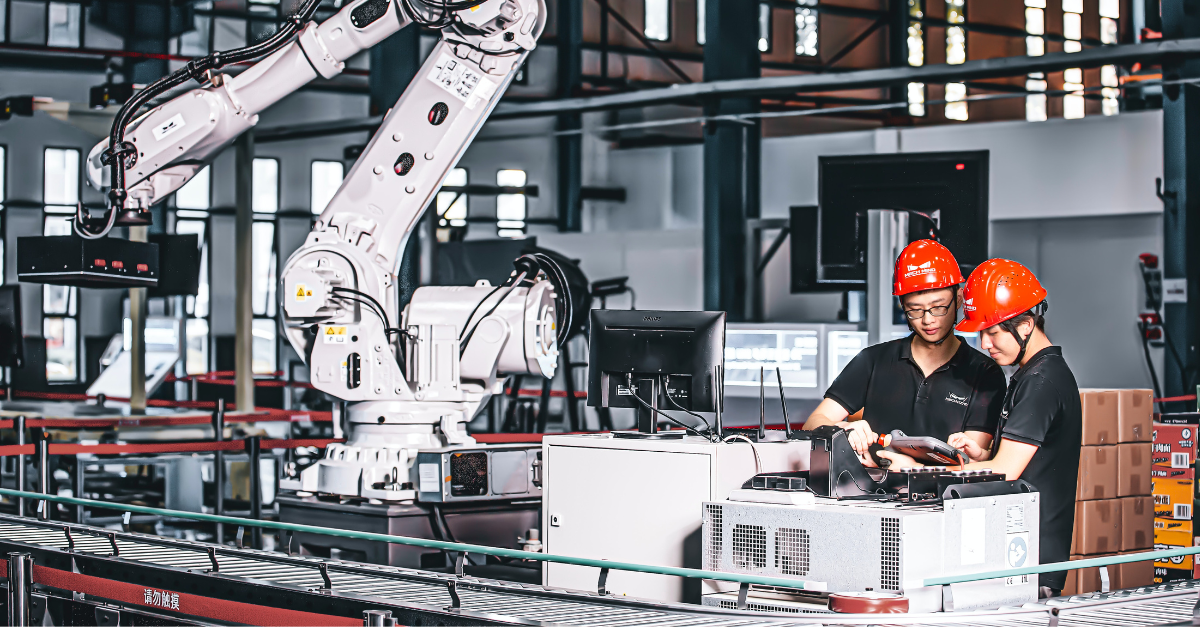
If you work in manufacturing, you’re probably familiar with the challenge of avoiding defective products. A defect as small as a missing or unidentifiable barcode can result in downtime and disappointed customers.
To limit the number of defective products, manufacturing companies struggle to manage these quality inspections. This article will introduce how to improve these inspections through computer vision – a field of artificial intelligence that trains computers to interpret and understand the visual world.
Problem - the cost of quality inspections
Every company in manufacturing has the challenge of reducing the number of defective products. Quality inspection is a must; otherwise, faulty products will appear one way or another.
Defect products can cause damage and be expensive, resulting in customer complaints, downtime, labor costs, and scrapped products.
Therefore, dedicated people are often used as the quality checkpoint, visually looking at the production line – which costs time and money.
The quality check is critical, but manually checking each product slows down the production phase since you must ensure the inspector can keep up with the production line.
Is it worth it? Well, it’s necessary to ensure high-quality products – even though it’s an expensive post for the company. In some cases, where risk is high, the cost of letting defective products slip through is considered worse. E.g., delivering faulty products to a client/customer could result in lost contracts/agreements. Therefore, it’s essential to avoid these scenarios and reduce errors, even if that often means having a lot of resources in place and a slower production phase.
A well-designed systematic quality inspection will have a positive effect on:
- Downtime
- Defective product
- Loss of revenue
- Lost customers
- Wasted time
- Wasted resources & man-hours
- Wasted money
- Decreased OEE / utilization
- And more..
In most cases, posting a person on the production line at each point of quality is often too expensive – so let’s talk about alternatives using new technologies like computer vision.
Solution - reducing defects and human errors by using computer vision analysis
The solution is to place some not-so-expensive cameras in places where you usually put or would like to put, a person to do visual inspections. Using digital images from cameras and videos, we can train computer vision models so that the analysis based on the model can be performed. and ask the cameras to accurately identify and classify objects. The edge computing device can consume each frame, to perform its analysis and ultimately output the “something” that the model was trained to output.
With these frames from a video, the model can be trained within a few hours to identify defects in real-time wherever you have repetitive quality inspections We can then use this data to react on what the camera “sees.”
Example 1: Best by dates on packaging
Implementing object detection on a packaging production line to detect valid printed Best By dates on packaging. This will allow the detection of misprinted, invalid, or missing Best By codes to be removed from production before being boxed and sent distributed to customers.
Example 2: Identifying cracks in metal pieces
We have a piece of metal running down the production line and want to check for cracks. This is where usually a person is standing, looking at it to identify the cracks. In this computer vision model, we can train artificial intelligence (AI) to decide for us – we can take pictures and determine which one shows a crack or not. Better yet, when cracks are undetectable to the naked eye, specialized cameras can be put in place to enhance this process.
Results and benefits
When implementing computer vision analysis, you can quickly identify results such as:
- Improved product defect detection
- Reduced waste
- Reduced lost time
- Increased customer satisfaction
Compared to a manual inspection by a dedicated team member, computer vision can archive 95-99% confidence in its detection while costing less and removing the human error factor in a single process, scaled up with multiple cameras throughout a process – This technology can improve quality and reduce waste.
What are the most impressive features of this solution?
- Realtime Object detection
- Instantaneous post-processing of detected results
- Stationary and Moving Object detection
- Continuous prediction model improvement
- Multiple levels of Inferencing
It’s impressive how many use cases it could be applied to – all we do is to train the model to look at something, what that something is up to us to define. Which means there are never-ending use-cases. Not limited to quality inspections but limited by the imagination.
Example of computer vision Real-time Product Recognition and Counting
What is unique with the solution from Novacura?
Customers worldwide are using different solutions for machine learning, virtual workstations, high-performance computing and IoT services. The unique thing with Novacura is that we don’t only provide AI solutions. We also connect the downstream processes. With Novacura FLOW we can connect to ERP, HMI, WMS, PLM, SCADA etc.
Other suppliers might be able to give you the data – but it’s what you do with the data that counts (...)
To summarize
By identifying defective items in real-time with computer vision in the production line, companies can reduce costs, increase efficiency and increase customer satisfaction.
There will always be best-of-breed solutions, but with Novacura you will get the artificial intelligence (AI) solution and a platform that you can do more with, such as mobile applications. The knowledge we have in Novacura in combination with these solutions is, what we would call, an unbeatable combination.
To learn more about using AI computer vision in your business, watch our on-demand webinar: Using AI to accelerate efficiency gains in Manufacturing and Engineering. We’ll discuss some of the challenges businesses face and provide real-life examples of how Manufacturers use AI computer vision to optimize efficiency.





